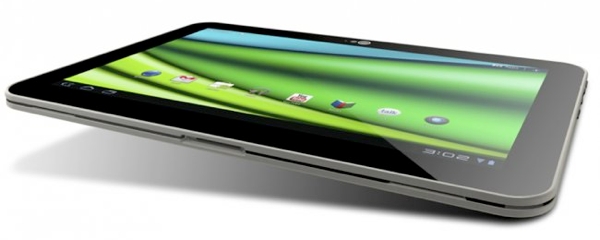It's no secret that tablet makers are having a hard time competing with Apple in this still nascent market. In fact, the iPad is selling so well that it surpassed the number of PCs shipped by any individual PC manufacturer over the last quarter of 2011 -- a telling statistic that gives some weight to all that post-PC talk.
Granted, Android tablets have managed to cut into Apple's market share, but there hasn't yet been a single device that could match the iPad on sales or popularity, or even come close. We were counting on 'Ice Cream Sandwich' to drive Android tablet sales, but almost five months into the OS' launch and very few tablets have received the update.
Amazon's Kindle Fire, which costs half of Apple's iPad 2, is the closest Android-based contender with an estimated 6 million units shipped in Q4. Meanwhile, other alternative platforms have crashed and burned.
In spite of this grim picture, there are good options out there that for one reason or another haven't received as much attention from buyers. We've compiled a comparative table with what we consider are the best tablets either currently available or announced so far. We've also included metascores from our Product Finder engine and review links to help you dig deeper and narrow down your next purchase.
At $400, the iPad 2 remains one of the best tablet options out there and its soon-to-be released successor will help Apple secure its reign for a while longer. The third-generation, "new" iPad hits store shelves on March 16 at the usual $500 starting price, packing a faster dual-core A5X SoC and a groundbreaking 9.7-inch display boasting of a 2,048 x 1,536 resolution.
The new iPad also gets upgraded cameras, optional 4G LTE radios compatible with Verizon or AT&T in the U.S., while maintaining the 10 hours of battery life promise. A solid upgrade overall.
Competing in the same price range from the Android camp is the Excite 10 LE, which is probably the sleekest looking tablet we've seen. Toshiba did away with the full-sized ports and a removable battery to achieve a 7.7mm thickness, but it still offers microUSB, microHDMI and a microSD card slot. The 10.1-inch slate has a 1.2-GHz TI OMAP 4430 processor running Android 3.2, with an update to ICS planned for this Spring.

Samsung's Galaxy Tab 10.1 and 8.9 are holding the fort at the $400 price point, reduced from around $500 to compete with the flood of Android tablets out there. Both models are scheduled to receive an update to ICS sometime during Q2 2012, when the new Galaxy Note is also supposed to arrive. Otherwise the Sony Tablet S, which has received high marks for its unconventional yet ergonomic design, is also available for ~$400.
Asus' Transformer Prime is only available in 32GB and 64GB varieties starting at around $500 (used to be a hundred more bucks only a week ago). The Taiwanese firm is pitching this as a premium tablet, with plenty of power courtesy of Nvidia's Tegra 3 chip and some neat add-ons like a keyboard dock -- if you're willing to part with another $150. The Transformer Prime has received plenty of praise but that enthusiasm hasn't been backed up by huge sales volume.
Regardless of that, Asus plans to keep pushing out powerful tablets in the coming months. The upcoming Transformer Infinity will up the ante with a high-resolution 1920 x 1200 pixel 10.1-inch Full HD display and optional 4G, while the Padfone will essentially combine a smartphone and tablet in one package.
Lastly, we have the Kindle Fire. Amazon is one of the few players that bet on a low-cost tablet coupled with a host of tightly integrated services. It's far from the most powerful device out there, but as we've learned already, tablets are about the whole experience and specs are only part of the picture. This strategy -- together with Amazon's sales platform and expertise -- has resulted in the best-selling non-iPad tablet. No doubt, Amazon will follow with a second generation Kindle Fire sometime this year, but nothing concrete has been revealed thus far.





























